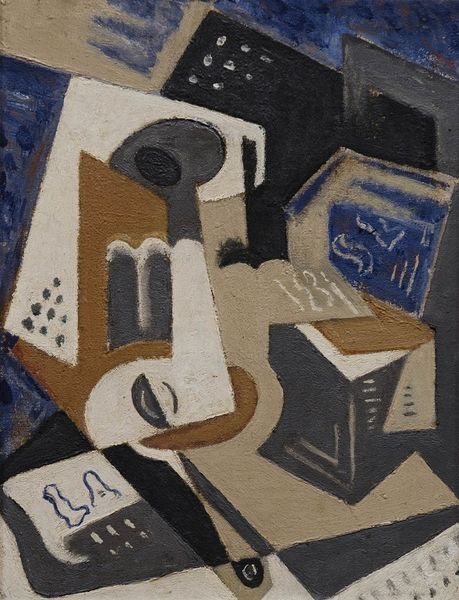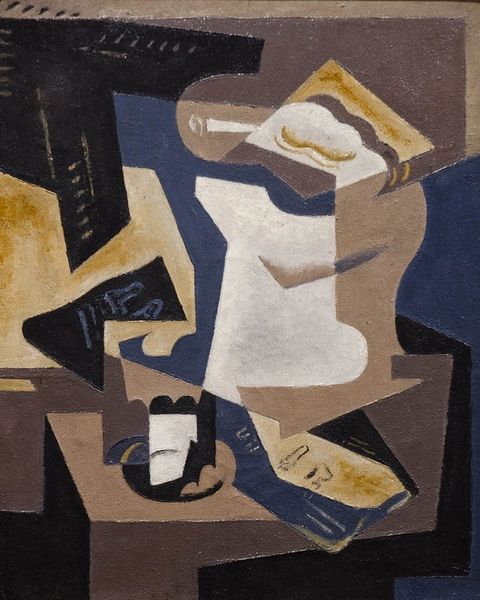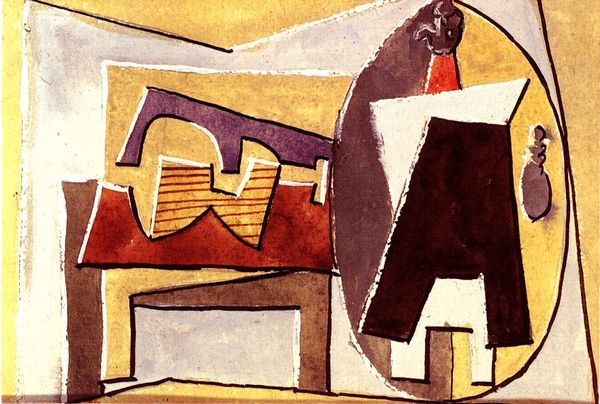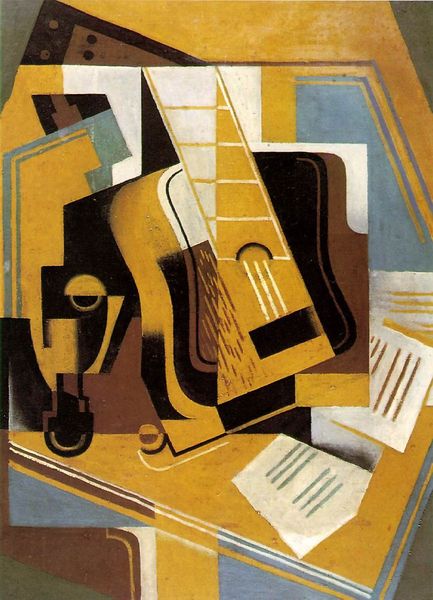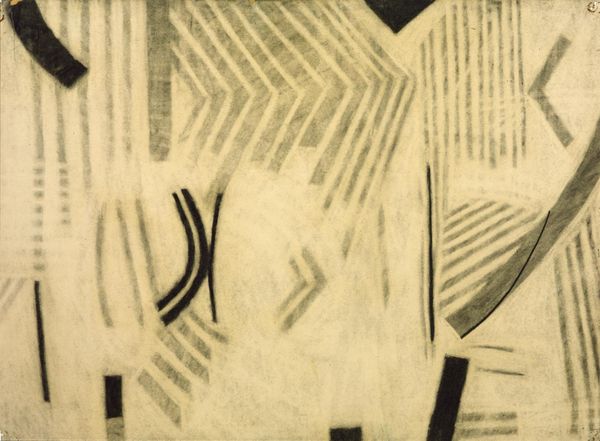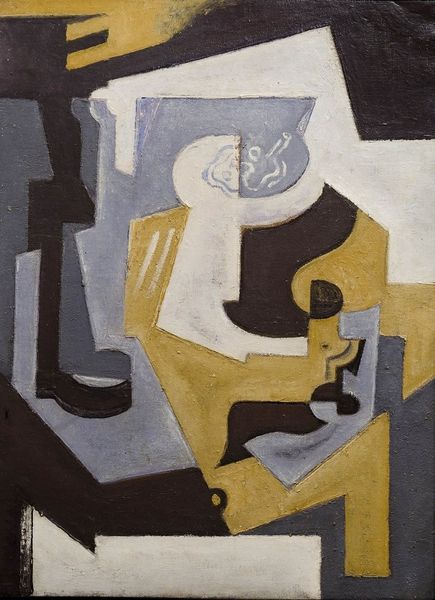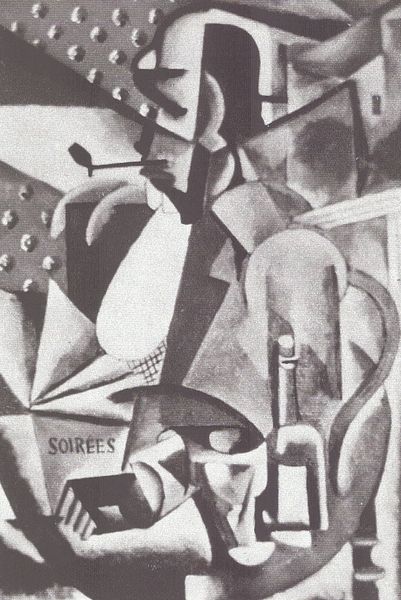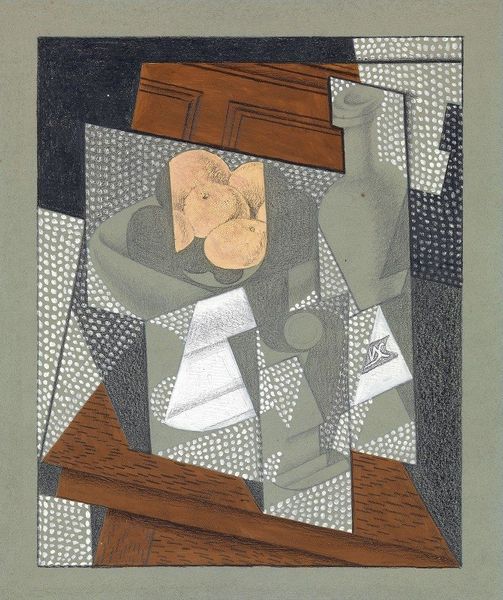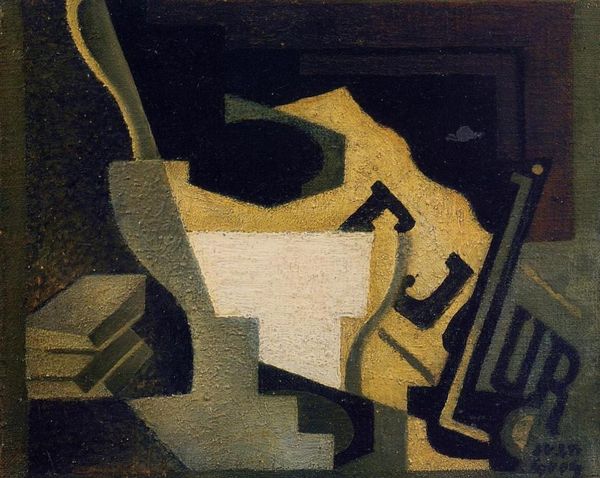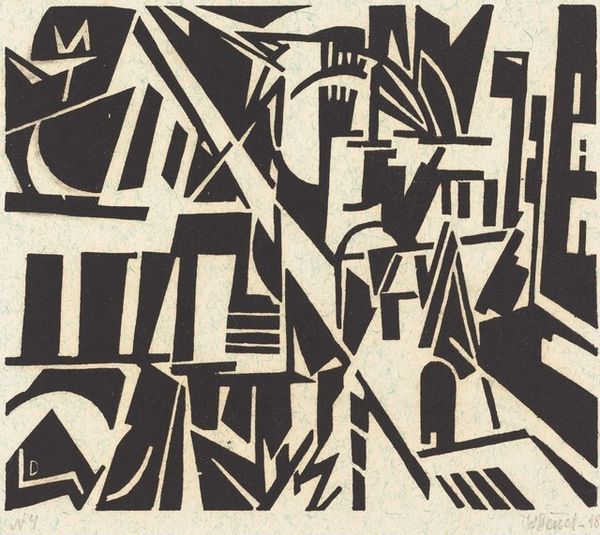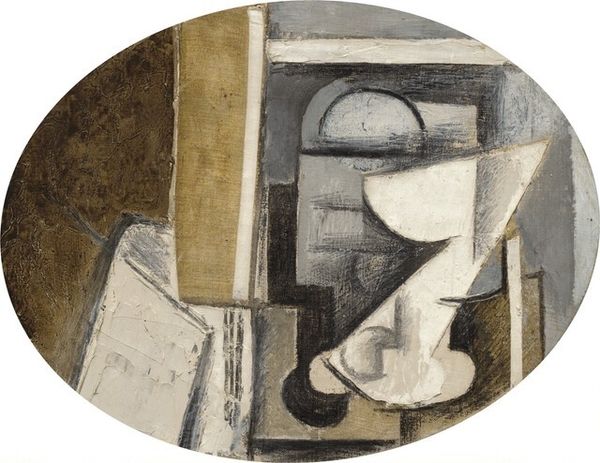
painting
#
cubism
#
painting
#
abstraction
Copyright: Public domain
Editor: We're looking at María Blanchard’s "Cubist Composition," painted in 1918. It’s a painting, clearly embracing cubism and leaning towards abstraction. At first glance, it feels almost like a muted symphony of shapes, a deconstructed still life in grayscale. What jumps out at you when you look at this work? Curator: It feels like peering into a memory, doesn’t it? The fragmented forms aren't just about breaking down objects; they’re about exploring how we *perceive* reality through multiple viewpoints simultaneously. The limited palette—those muted grays, blacks, and creams—adds a layer of melancholy, a sort of reflective stillness. Do you see the influence of early cubists like Picasso and Braque, but with Blanchard's own unique, softer touch? Editor: I can definitely see that softening! The harsh angles are there, but somehow less…aggressive. More thoughtful? It's interesting you call it a memory, what objects do you make out, if any? Curator: Well, there’s something that resembles a musical instrument, perhaps a guitar or mandolin. And maybe papers or books? Blanchard seems less concerned with faithful representation and more interested in distilling the essence of these forms. It is as if she wanted to hint at the emotional residue that objects leave behind. What is your take? Is it working? Editor: For sure. I find that tension so captivating—the intellectual rigor of Cubism mixed with a more intuitive, emotional sensibility. Thanks for untangling the shapes for me! I'm finding Blanchard quite approachable, maybe it's those colours? Curator: Exactly. It’s Blanchard’s unique voice – turning the Cubist method into a personal meditation. Something powerful to think about for us all.
Comments
No comments
Be the first to comment and join the conversation on the ultimate creative platform.
